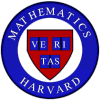5. Class Field Theory (spring) taught by Grigor Grigorov
Prerequisite: group theory (such as in Math 122).
Students who are taking the tutorial should have some basic
knowledge of general topology and some familiarity with integration
and measure theory in the classical context. Good knowledge of
algebra at the level of Math 122 and 123 is required. Also the
people in the tutorial should either know some algebraic number theory
or should be concurrently taking Math 129.
First Meeting Tuesday Feb 10 at 5pm, Room 507
Description:
Class field theory is one of the fundamentals of modern number theory. It
classifies the abelian extensions of a given number field in terms of the
arithmetic of this field. It is quite easy to formulate the fundamental
theorems of the theory but the proofs are hard. In this tutorial we are
going to follow Weil's approach which is based on integration
on locally compact groups and the study of central simple algebras. The
goal of the tutorial would be to go in detail through the book \cite{Weil}.
We will focus on understanding the proofs of the main theorems in class
field theory and this will require active participation from the students.
One of the reasons for choosing Weil's book is that it is hard to read
on your own and hopefully that will encourage the students to work
together. In addition to the main reference the book by Ramakrishnan and
Valenza is a useful reference for the theory of integration on
locally compact groups. Another source which might be helpful are Milne's
notes.
References:
- Weil, Andre, Basic number theory, Springer-Verlag, 1995
- Ramakrishnan, Dinakar and Valenza, Robert J., Fourier analysis on number
fields, Graduate Texts in Mathematics, Springer-Verlag, 1999
- Milne, J. S.,
Class Field Theory
|
For more information regarding tutorials, please contact
Andy Engelward.
|

